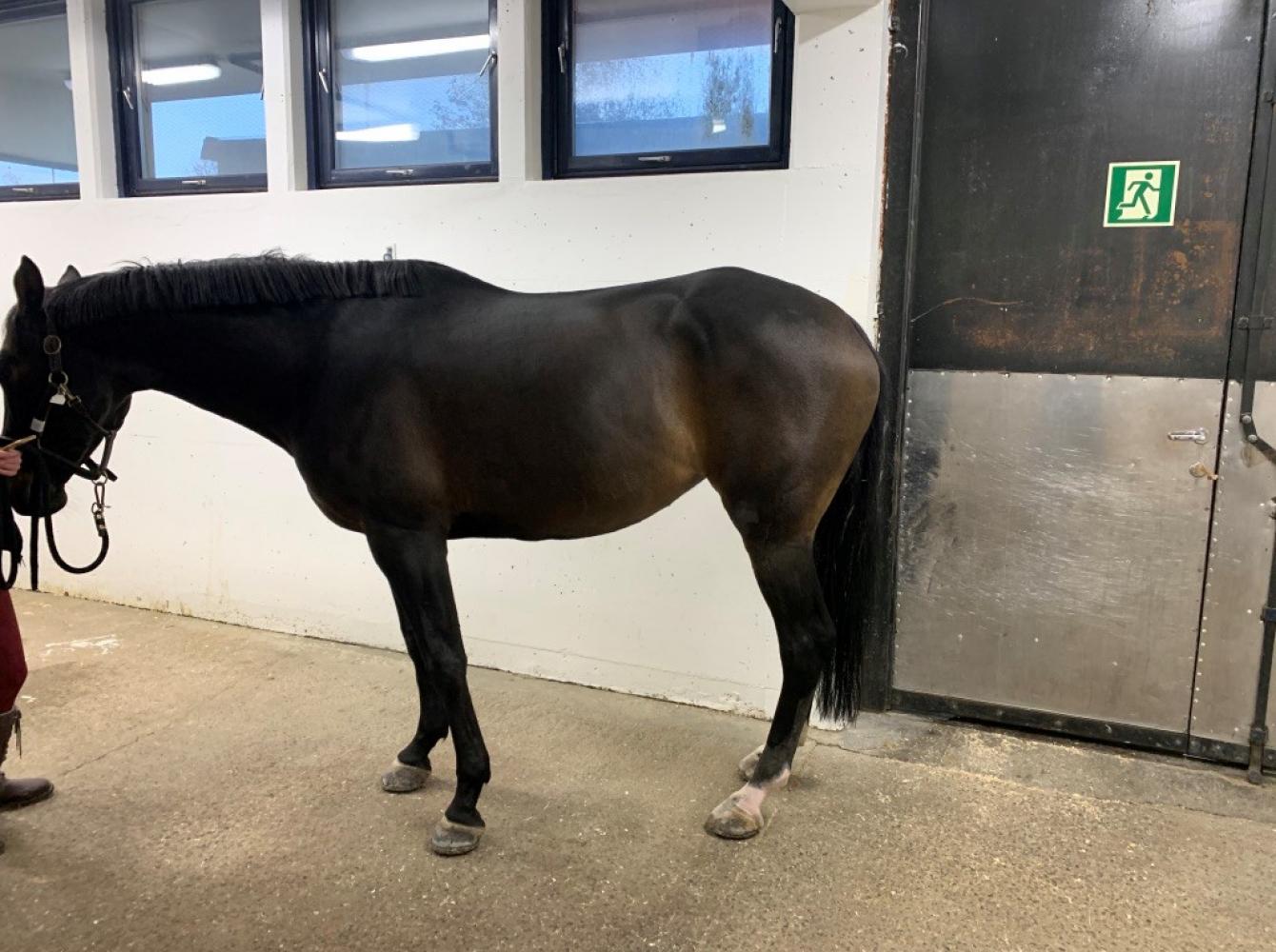
Low Plantar Angle
Aksel treats a horse with a low plantar angle
Patient:
12 year warmblood showjumper
Anamnese/history:
Presented with back/sacroiliac issues and General unwillingness!!
Camped under Posture
Slope of the coronary band from the toe to the heel have an acute angle.
Bulbs of the heels have a “bended” appearance
Dorsal hoof wall begins to take on a “bull nose” appearance
Frog is situated well below the hoof wall
Frog is generally large from the constant stimulation with the ground.
Longer toe makes the foot stay longer on the ground
Horse is sore and restricted in hindleg movements
Radiographs shows -4,7 degree Plantar Angle
Diagnosis:
Definition:
Plantar(hind feet)/palmar(front feet)angle.
The relation between the solar surface of P# and solar surface of the hoof.
Considered normal between 2-6 degree
Under 2 degrees affects biomechanics and are overloading several structures.
Most focus are on front feet but hindlegs are also affected to a great extinct
Issues caused by low Plantar angle:
• Suspensory branches injuries
• Collateral ligaments injuries
• Tarsitis/spavin
• Stifle/patellar problems
• Gluteal pain
• Proximal suspensory injuries
DDFT injuries and sheet swelling
Treatment:
Shoeing and trimming:
Front half of the hoof trimmed, heels from the widest point of sole left untouched
Libero set toe- to reduce leverage in breakover, secure the shoe from being displaced, make sure dorsal hoof wall is weightbearing,
Leather wedge pads- for restoring PA and change posture to reduce load of the heel- loads shearing with frog and sole
Comfort-Mix hoof pad soft packing for weight shearing with frog and sole
Timeline:
November
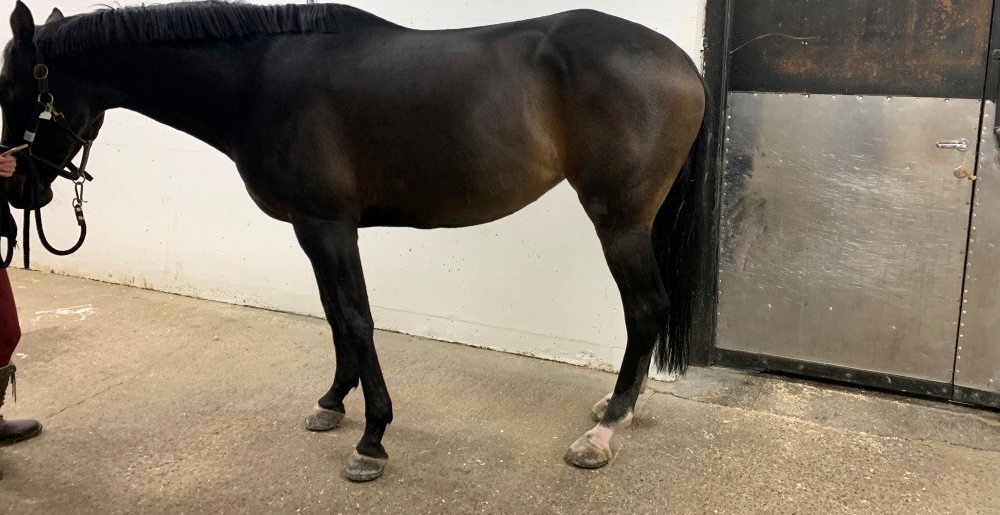
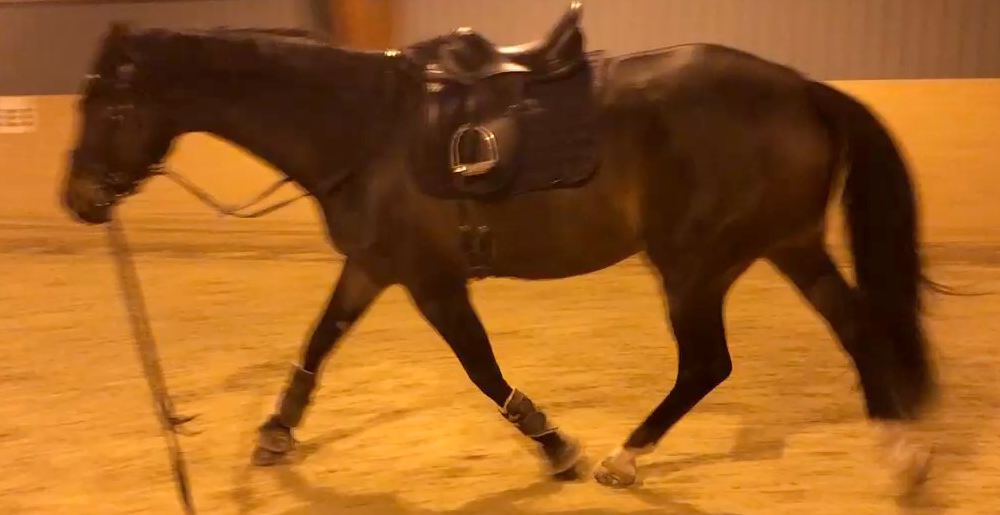
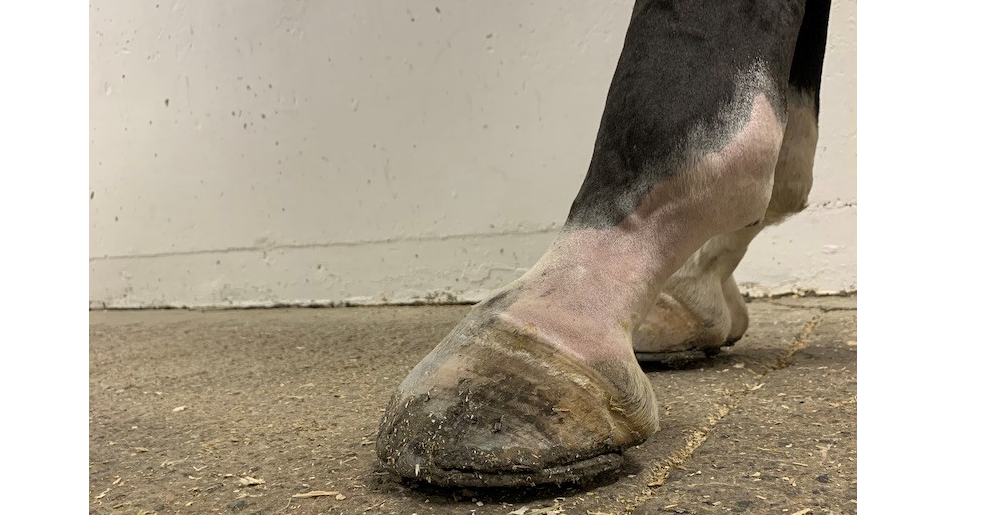
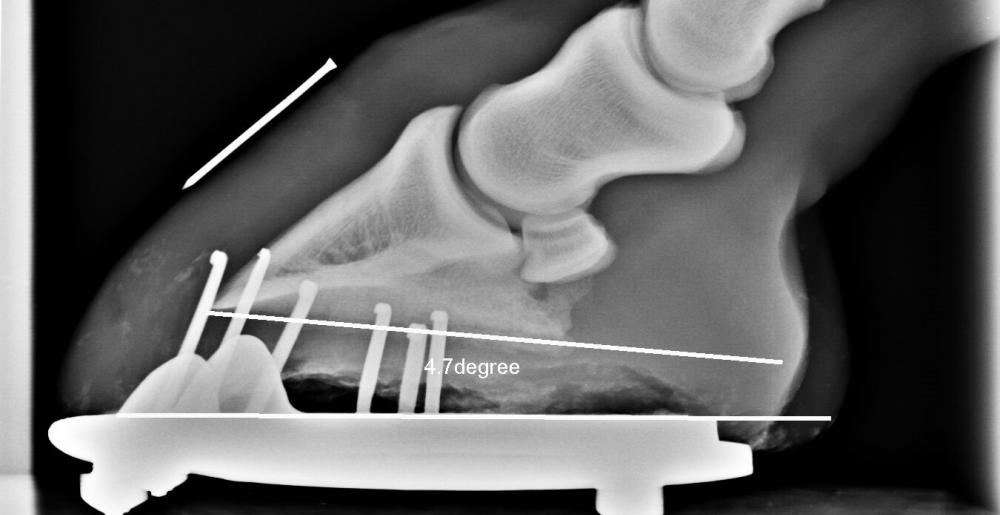
December:
Horse is improving in general conditions
Heels growing and bulbs are relaxing
PA improving
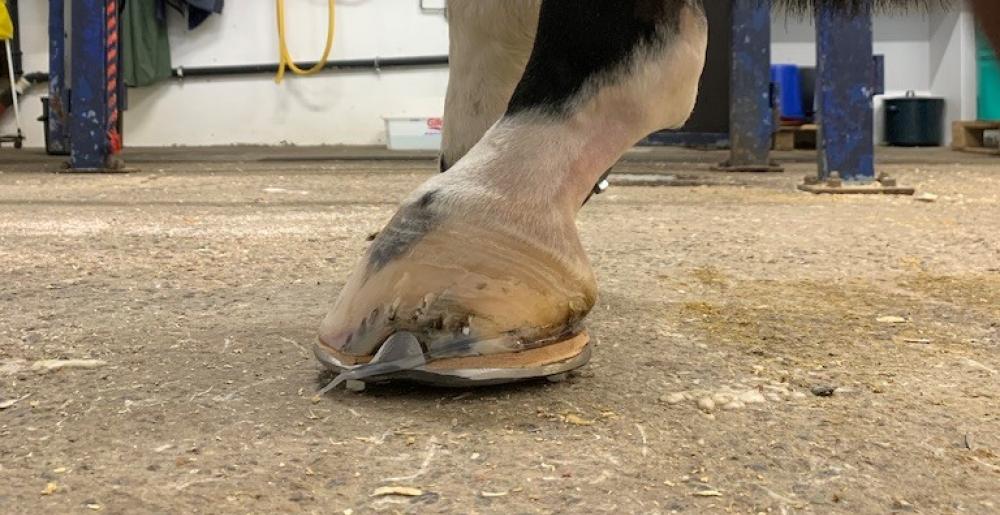
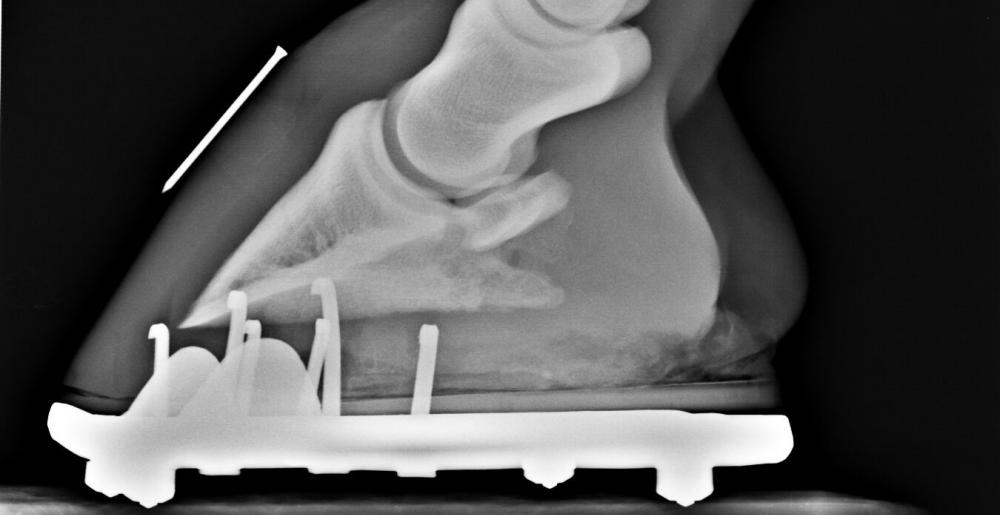
January:
PA within normal range 3.5 degree
Posture and general movement are improved and normalized
As heel are stronger and less underrun
Pads are removed
Set toe and caudal support(long shoes) recommended for continuous shoeing
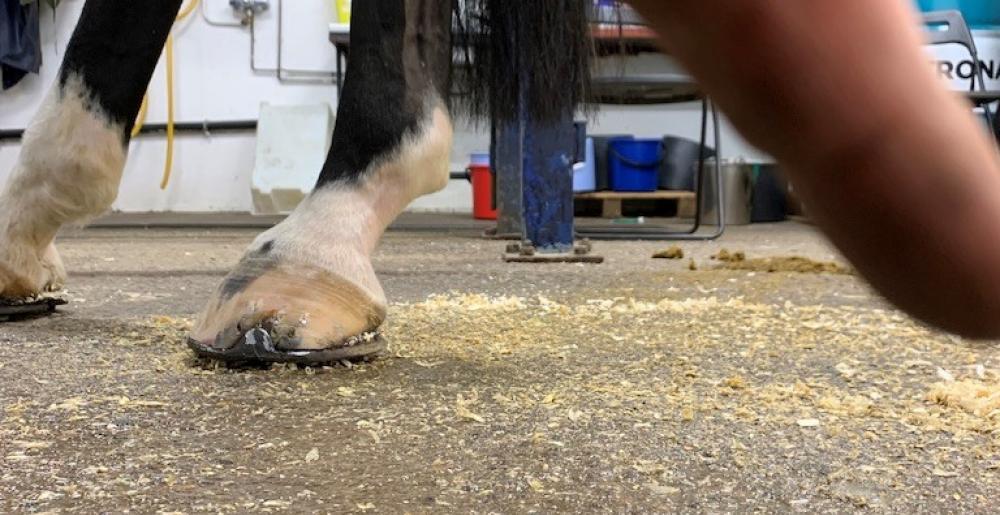
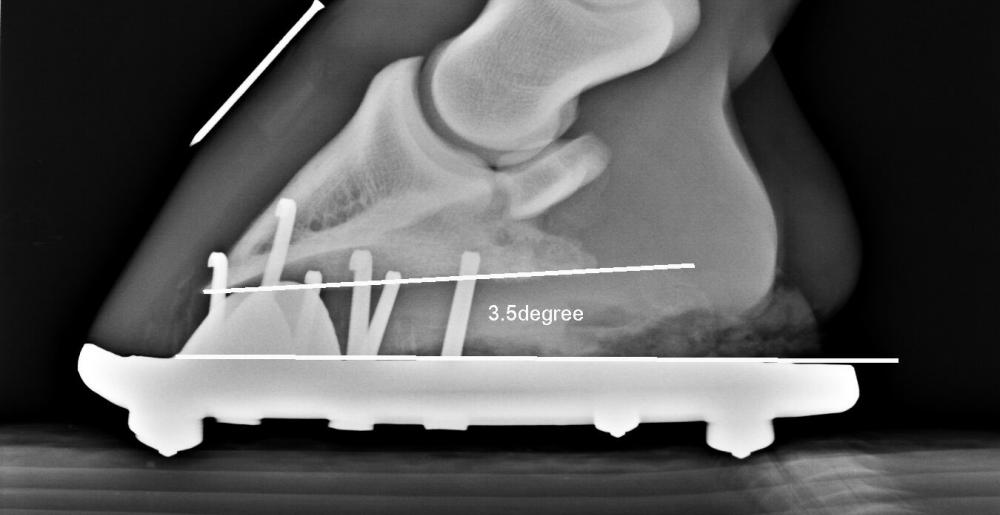
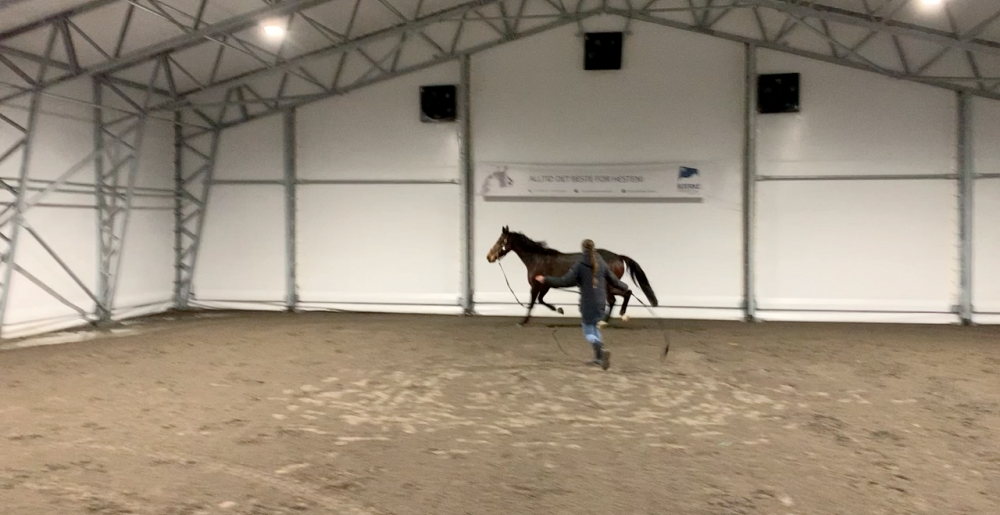
Prognosis:
The horse responded very well to shoeing and treatment. Further development is hopeful depending on adequate training and recapitalization.